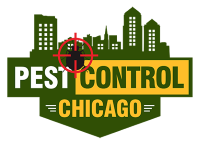Some Known Questions About Pest Control Chicago.
Some Known Questions About Pest Control Chicago.
Blog Article
Not known Facts About Pest Control Chicago
Table of ContentsAll About Pest Control ChicagoThe Basic Principles Of Pest Control Chicago Pest Control Chicago Fundamentals ExplainedPest Control Chicago - TruthsGetting The Pest Control Chicago To WorkThe Greatest Guide To Pest Control Chicago
Planting or gathering a plant before (or after) a pest is existing decreases insect damage by avoidance. Capturing and determining an insect's growing level days can assist with planning around a bug's lifecycle. Damage resistance can in some cases be accomplished by planting a plant early to make sure that the plants are more powerful, much more immune, and extra tolerant to damages by the time insect bugs are present.
By producing a tiny, controlled area that the bugs choose, it is feasible to draw away parasites far from the main plant. 2 techniques for this are catch chopping and strip harvesting. is growing a recommended host plant of an insect pest near the primary plant that is to be protected.
If essential, the pests can then be eliminated in the catch crop. Trap crops can be any kind of types that the insect preferseven coincide species as the key plant - Complete pest control Chicago. If the catch crop coincides types as the primary crop, it ought to be grown at once that will certainly best tempt the insect far from the main crop
The 6-Second Trick For Pest Control Chicago
 This technique works when gathering a trap plant due to the fact that it keeps some environment for the insect. Consequently, the bug does not move to discover brand-new habitat in an adjacent greater worth or even more susceptible plant. https://pest-control-chicago.jimdosite.com/. The methods already stated concentrate on minimizing plant exposure to insect bugs, however it is also possible to lower return loss even when insect damages occurs
This technique works when gathering a trap plant due to the fact that it keeps some environment for the insect. Consequently, the bug does not move to discover brand-new habitat in an adjacent greater worth or even more susceptible plant. https://pest-control-chicago.jimdosite.com/. The methods already stated concentrate on minimizing plant exposure to insect bugs, however it is also possible to lower return loss even when insect damages occursPlant them effectively and maintain the plants healthy and balanced by thoroughly sprinkling, fertilizing, and trimming them. If a pest or disease causes undesirable damages regardless of preventative efforts, select a reliable management approach that will have the least quantity of influence on various other living animals and the setting.
Little Known Questions About Pest Control Chicago.
 Seek symptoms the plant exhibits as an outcome of insect activity. Examine your plants typically. Identify your plants to make sure that the twisted fallen leaves, unusual coloration, or strange-looking frameworks you see are not a regular part of the plant. Attempt to rule out site-related issues by making certain that the dirt type, water drainage conditions, fertility degree, and various other environmental problems are beneficial for the plant.
Seek symptoms the plant exhibits as an outcome of insect activity. Examine your plants typically. Identify your plants to make sure that the twisted fallen leaves, unusual coloration, or strange-looking frameworks you see are not a regular part of the plant. Attempt to rule out site-related issues by making certain that the dirt type, water drainage conditions, fertility degree, and various other environmental problems are beneficial for the plant.Pests and mites frequently are related to certain plants, and they adhere to particular advancement and behavior patterns as the period proceeds. Use reference publications from the library or yard facility to determine parasites. If you can't discover a precise description there, consult somebody in your regional extension workplace. Learn more about the pest's life cycle, habits, and natural opponents.
If so, an application of a nonselective pesticide can kill them, permitting the pest population to rebound uninhibited by predators and bloodsuckers, which may have been giving substantial control. If a control is needed, think about physical or biorational approaches. If they are unavailable or not practical, you might need to meticulously use a standard chemical control.
The Best Strategy To Use For Pest Control Chicago
 For instance, some aphids and termites can be ripped off by spraying the plant with water. Bagworm larvae can be picked off a plagued plant. You can use catches to catch particular bugs, and barriers to secure plants from insect strike or condition infection. One efficient method for managing gypsy moth larvae on handful of trees is to put a band of folded burlap around the tree trunk to supply a fabricated relaxing website for the caterpillars, and afterwards ruin the caterpillars that collect there.
For instance, some aphids and termites can be ripped off by spraying the plant with water. Bagworm larvae can be picked off a plagued plant. You can use catches to catch particular bugs, and barriers to secure plants from insect strike or condition infection. One efficient method for managing gypsy moth larvae on handful of trees is to put a band of folded burlap around the tree trunk to supply a fabricated relaxing website for the caterpillars, and afterwards ruin the caterpillars that collect there.In some cases, the finest option might be physically eliminating the plant and changing it with one that will certainly not be influenced by the bug or condition. The first group consists of living microorganisms that can eliminate the insect.
Bloodsuckers survive on and typically kill another microorganism, called the host. Some parasitical wasps use caterpillars, whiteflies, aphids, and soft ranges as hosts. An example of a method that uses a naturally occurring biochemical is the microorganism Bacillus thuringiensis (Bt). Bt contains a protein that is toxic to particular insects, yet safe to other organisms.
Pest Control Chicago Fundamentals Explained
When the sensitive insect bug feeds on the sprayed fallen leaves, it will consume the healthy protein and be killed. Conventional chemicals Resources are made use of just as a last resort in an IPM program, yet sometimes are one of the most reliable ways of control. To have the best effect, these materials require to be applied on a certain component of the plant when the parasite is most at risk.
In numerous instances, ecologically safe pesticides such as gardening oil or insecticidal soap work selections - https://pest-control-chicago.webflow.io/. Once more, applications have to be timed very carefully to have the best result on the pest insect populace. Because they have no recurring activity after they have dried out, soaps and oils are generally the option that is the least turbulent to populations of helpful organisms
These words, from least hazardous to most harmful are: "care," "caution," and "risk." Utilize these words as guidelines to aid you choose the least unsafe material among the effective options. For many landscape insects, you need to take into consideration chemicals in only the very first 2 categories. Some pesticide formulations can be used just by applicators with unique training and who are licensed by the state's department of agriculture.
Getting My Pest Control Chicago To Work
Refer to the Woody Ornamental Pest, Mite, and Disease Management Overview, released by Penn State Expansion, or to an additional existing recommendation for a list of products that are signed up for usage on plants in your state. Read the label to be sure that you have actually picked an item that works against the bug you have identified, and select your timing based on specialist suggestions.
Report this page